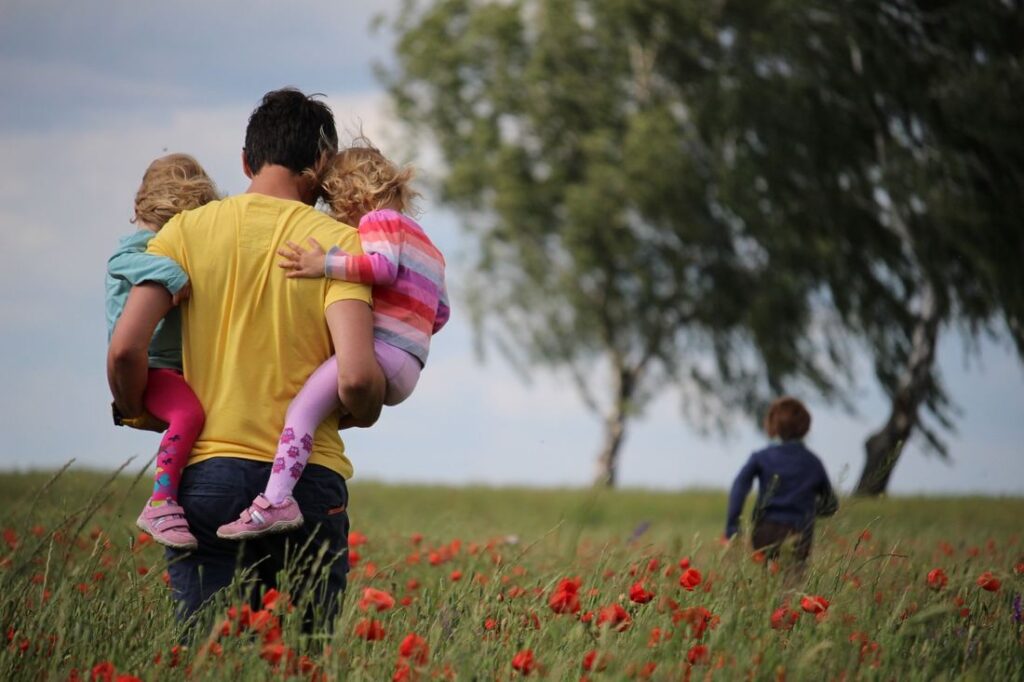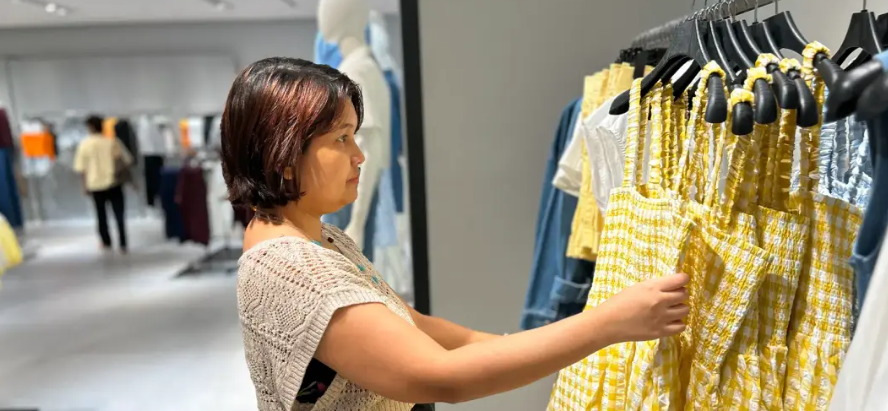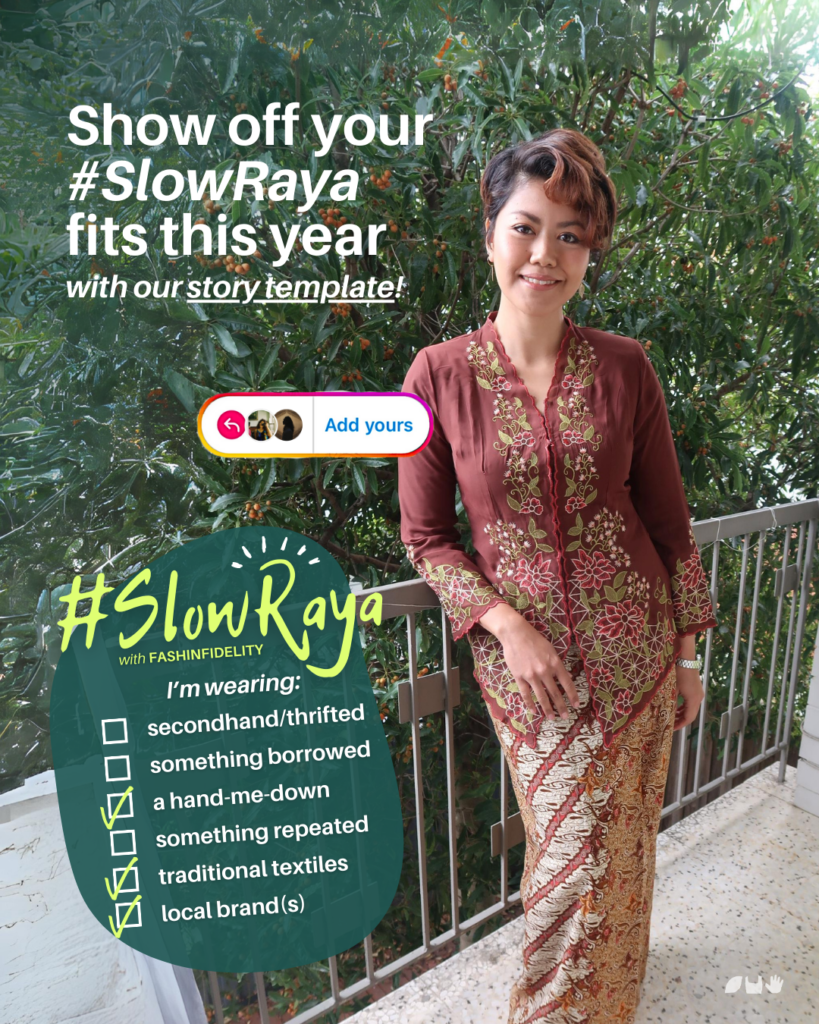Now that we’re at the tail end of the ‘gifting’ season, I’d like to catch you just in time before we usher in the new year to talk about creating positive impact.
1753 words; 8 min read.
Above featured photo: What we do today, will impact our children’s generation, and their children’s generation. Souce: Juliane Liebermann via Unsplash.com
I often receive feedback on how great I am at staying motivated to keep up with my fitness regime six days a week (OK fine, sometimes four or five.) The new year is a great benchmark of when we usually make resolutions to become healthier, fitter, stronger, more focused, throw away bad habits, or to get started on that dream project that feeds our inner passion and desires.
Action feeds motivation
When asked what actually motivates me to get up and go: I respond by stating that I just do. Many of us seem to think that motivation precedes action; that you need motivation to be inspired to do something. This is actually a myth.
I have days where I am not motivated, sure. Being self-employed working in the creative industry requires an amount of discipline that is not structured like a 9am to 5pm working week. But I know I have a vision that needs to be realised; and this is what people normally go by: their desire to reach a goal. They generally have an idea what kind of result they want to achieve but don’t know where to start. This is OK. I say to you: just start. Nothing starts off being a perfect piece of work, art, body, or skill.
So I can tell you this: action leads you to the next ‘thing‘ you’re meant to do. Once you actually do something, even the smallest of it, like putting on your running shoe, your reflexes will show you the way. Then you’ll see a continual loop of action, inspiration, and motivation meshed in together.
Starting to write this article required some effort, yes, as there are family around during the holidays that are taking some of my working time away from me and I could easily get distracted with joining in holiday-type ‘activities’ (e.g. binge watching re-runs of Scrooged and Elf.) However, as I started to open this template, inserted my stock photo, typing the Title of the article… my hands just kept on going as I knew the story I wanted to convey.
This article is about creating positive impact. So now that we’ve covered the power of action, let’s move on to why..

Some fast fashion brands you may recognise
Fast Fashion
You probably know by now that #FastFashion is not good for our planet. The resources it requires is putting extra pressure on our #environment and people, in a negative way, while big corporations are only interested in making more profit for themselves by squeezing tight the cost of production, mainly in the form of wages and raw materials, and avoidance of #compliance.
If you’re already thinking about positively impacting your own future as the countdown to midnight on December 31 gets closer — be it your health, your family, your relationships, your career, your ambitions… then this innate urge can only be described as a natural human feature: to improve upon something.
In terms of consuming fashion, the statistics don’t lie — more of us are concerned over the impact that mindlessly following trends and over-producing clothes are having, like it or not. Some groups in certain geographical regions are not as sensitive to the subject, but the tide from consumers, as well as producers, are closing in towards each other.
This is evident in the latest State of Fashion 2019 Report, the third of its kind and the most authoritative on the industry, written by McKinsey & Company in partnership with Business of Fashion (BoF). The Report forewarns a disruptive year ahead as sales growth is projected to slow slightly compared to 2018’s projections, across many value segments and regions, due to external shocks and economic uncertainty.
The State of Fashion surveyed more than 275 global fashion executives (approximately 30 percent more than last year) and interviewed thought leaders and pioneers, and provides for insight into the Top Ten #fashion trends of 2019.
According to the Report, “regardless of size and segment, players now need to be nimble, think digital-first, and achieve ever-faster speed to market. They need to take an active stance on social issues, satisfy consumer demands for radical transparency and sustainability, and, most important, have the courage to “self-disrupt” their own identity and the sources of their old success to realise these changes and win new generations of customers.”
As automation and data analytics have enabled a new breed of start-ups to achieve agile made-to-order production… players are… responding more rapidly to trends and consumer demands, achieving just-in-time production and reducing overstock and making short, small-batch production cycles the new norm.
On Sustainability
One of the Top Ten fashion trends identified the lifespan of the fashion product is becoming more elastic as pre-owned, refurbished, repair and rental business models continue to evolve. As “one in seven [young people] consider it a fashion faux-pas to be photographed in an outfit twice..“, this is a win for sustainability. (44% of survey respondents believe the pre-owned and rental business models will be more relevant in 2019 than in 2018.)
Another great win for #sustainability comes from on-demand consumption. As automation and data analytics have enabled a new breed of start-ups to achieve agile made-to-order production, mass players are forecasted to begin to experiment next, responding more rapidly to trends and consumer demands, achieving just-in-time production and reducing overstock and making short, small-batch production cycles the new norm. This sounds like a reversing of the fast fashion model to me!
The Report also makes a case for the distrusting customer, who expects the same sharing of information on value for money, creative integrity, and data protection after years of having personal data owned and handled by businesses. This is in line with Fashion Revolution’s recent Consumer Survey Report’s findings in which the majority of consumers surveyed (Germany, United Kingdom, France, Italy and Spain only) think fashion brands should be more #transparent.

Page 62 onwards of the 2019 State of Fashion Report by BoF and McKinsey & Company goes into detail of what radical transparency means for businesses
Keep going slow
The wave of disruption in fashion will only continue towards shifting consumer needs that either will make or break the fortunes of brands and companies. The State of Fashion concludes that even though the turmoil will continue in 2019, this should be seen as an opportunity to “self-disrupt” in order to respond and stay relevant.
In other news, we, as #responsible #consumers, should continue to follow the 5 Rules of Slow Fashion, and keep disrupting fashion from the outside:
- STOP buying
- REPURPOSE old clothes
- RESCUE stuff/material to make new things
- SWAP, RENT, or BUY SECOND-HAND
- SUPPORT LOCAL and ARTISANAL products (if you really need to buy new)
That natural human feature, to improve upon something applies here. Once you start supporting the Slow Fashion movement, you’re already making a #positive difference.
The Global Fashion Agenda and Boston Consulting Group, in its Pulse of the Fashion Industry Report, puts fashion, as an industry, responsible for the emission of 1,715 million tons of carbon dioxide equivalent (CO2-e) in 2015, about 5.4% of the 32.1 billion tons of global carbon emissions that year. The emission trail behind electricity and heat (24.9%), agriculture (13.8%), road transportation (10.5%), and oil and gas production (6.4%), and is equal to livestock (5.4%).
The Pulse of Fashion argues that the industry must do more to put fashion on a path to long-term prosperity — financially, socially, and environmentally — and measures its “Pulse” points (out of 100, based on metrics off the Sustainable Apparel Coalition’s Higg Index), to get there. Since 2017, their work has demonstrated that sustainability means good business. Their website states, “..new data and calculations show that investments in resource #efficiency, secure work environments and #sustainable materials boost profitability by up to 1-2 percentage points in EBIT margin by 2030.” In the end though, they have summoned that it needs to be a joint effort by investors, regulators, NGOs, academia and consumers — to create an ecosystem that supports transformational innovation and disruptive business models. As at September 2018, the industry’s Pulse sits at 32.
Going back to impact, consuming fashion differently can really change the world. Because the industry’s upstream processes involve: electricity (i.e. powering factories and mills), agriculture (i.e. cotton, leather), and oil and gas (i.e. polyester.) Can you see?
I’m proud of us!
For a bit more on the Slow Fashion lifestyle, check out my presentation on SlideShare.

As we continue to go about our daily lives..
Throughout 2019, I’d like you to consider gifting consciously as we approach the yearly festivities and celebrations for ourselves, but also for others. If the person you’re gifting already has enough material things, then perhaps gift them an ‘experience’, for example, something they’ve wanted to try out but are too chicken to do.
You can also swap gifting with donating to a cause that the person (or you) cares (care) very much about, or buy a gift of which its proceeds go to this cause.
#Quality, not quantity: curate your gifts to your favourite people — something that is practical and useful, that will have multiple positive ‘impacts’. Positive impact can mean: reduction of cost, avoidance of new resources, benefits someone’s education.. the list goes on.
Something like a #reuseable cutlery/straw pack, a reuseable cup if they’re a coffee lover, a fitness program membership if they’re trying to get started but haven’t, a yearly theatre company subscription to nurture their interest in the arts.
I… help individuals and companies make decisions every single day, that create not just one positive impact, but many.
This is, in essence, what I do — I’m Najah (@cleonajah), the creator of FASHINFIDELITY.COM and Principal Consultant at Footprint Mechanics. I work to help individuals and companies make decisions every single day, that create not just one positive impact, but many**. If you have to make a decision about anything; today, tomorrow, and next week: get in the habit of thinking about how many ‘impact’ categories you can affect. It could be for people’s livelihoods, wages, encourages reuse and recycling, replacing your raw materials to lower-footprint equivalent, promotes healthier bodies, flora and fauna preservation, integration of systems and adoption of newer technology, builds community capacity.. you catch my drift.

People in varying conditions of workplace environments make your clothes. Sustainability is not perfection; it’s a journey. Photo: At a recycled cotton yarn factory in Neemrana, India, November 2018.
FASHINFIDELITY is an online platform that tries to deconstruct the fashion supply chain, adding substance to the #ConsciousFashion chatter. We try to dissect the convoluted weave of how fashion actually works, without misconstruing the significance of all the steps involved. If you have an interest in facts without spin and a scientific approach to solving problems, head on over to the blog section of the website and follow us on Instagram.
Remember: consume less, consume consciously, think about multiplying positive impacts in all aspects of decision making, and give well! Wishing everyone a safe and meaningful #holiday season. I’ll see you in the new year 💚
**If you need help with incorporating sustainability principles in your organisation, please get in touch. I’m currently based in Kuala Lumpur, but travel between Melbourne and Perth, Australia, to Southeast Asia, regularly. I would be happy to de-mystify sustainability and simplify what it means in terms of action for you. New year, new you!
Join us in our Slow Fashion movement with the hashtags #ConscientiousFashionista and #wardrobetruths on Instagram, and follow us at @fashinfidelity.
Tags: #sustainability #sustainabledevelopment #supplychain #conscientiousfashionista #fashioneducation #fashionisnolongertrendy #wardrobetruths #saynotosingleuse #ethicalconsumption #consciousconsumption #ethicalfashion #sustainablefashion #newyearresolution #newyear #newyearnewyou #2019 #positiveimpact
References:
- Tofugear and Rakuten Insight, The Digital Consumer in Asia 2018, November 2018, https://jingdaily.com/downloads/the-digital-consumer-in-asia-2018/ (last accessed 26 December 2018)
- McKinsey & Company and BoF, The 2019 State of Fashion, November 2018, https://www.mckinsey.com/industries/retail/our-insights/the-state-of-fashion-2019-a-year-of-awakening (last accessed 26 December 2018)
- Fashion Revolution, Consumer Survey Report, November 2018, https://www.fashionrevolution.org/resources/consumer-survey/ (last accessed 26 December 2018)
- Global Fashion Agenda and Boston Consulting Group, Pulse of the Fashion Industry, September 2018, https://www.globalfashionagenda.com/initiatives/pulse/# (last accessed 26 December 2018)
- ETHICAL UNICORN, Fashion Is NOT The Second Highest Polluting Industry, Here Are The Real Numbers, 1 February 2018, https://ethicalunicorn.com/2018/02/01/fashion-is-not-the-second-highest-polluting-industry-here-are-the-real-numbers/ (last accessed 26 December 2018)




